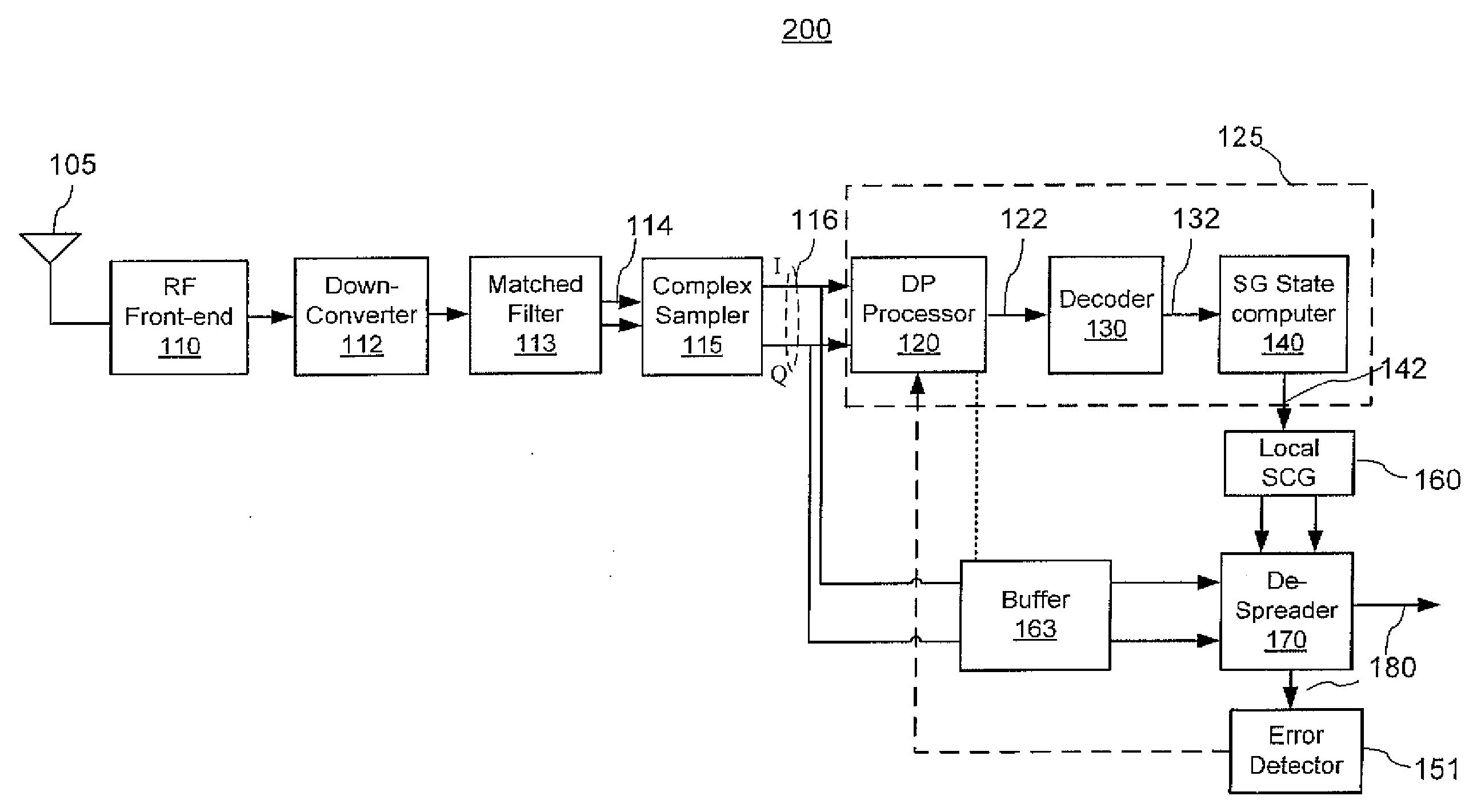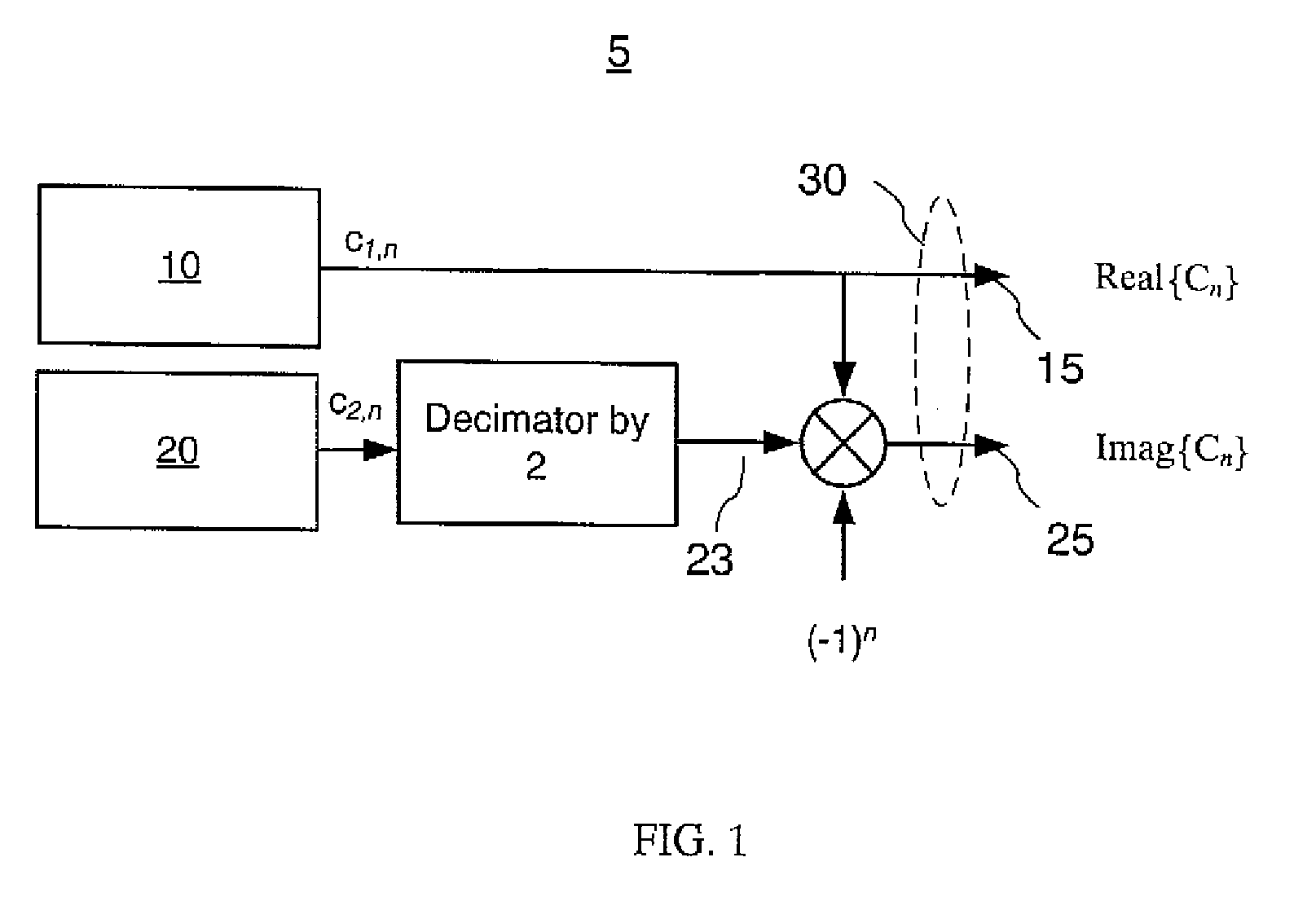Spreading code acquisition for direct sequence spread spectrum signals
a technology of spread spectrum and code acquisition, applied in the direction of transmission, code shifting or hopping, electrical equipment, etc., can solve the problems of difficult for casual eavesdroppers to find the correct code phase, and inability to blindly search for the “best correlation” , to achieve the effect of efficient acquisition of a complex spreading sequen
- Summary
- Abstract
- Description
- Claims
- Application Information
AI Technical Summary
Benefits of technology
Problems solved by technology
Method used
Image
Examples
Embodiment Construction
[0048]In the context of this specification ordered sequences of symbols may be referred to as vectors; for example, the notation {x(i)}K represents an ordered sequence of the elements x(i), i=1, . . . , K, where K is the length of the sequence, or a set of all elements of a vector {x} of length K, so that {x}={x(i)}K. An i-th symbol x(i) in a sequence {x(i)}K, will also be referred to as the i-th element of a vector x representing said sequence. The subscript “K” in the sequence notation {x(i)}x will be omitted where possible without loss of clarity. The notation x(i) or xi denotes an i-th element of a vector x, with the index representing a time sample, or the element location in a sequence of elements represented by the vector x. The notation mod(x,y) denotes x modulo-y arithmetic, so that by way of example, mod(5,4)=1 and mod(4,4)=0. The notations Re(x), Real(x), Real{x} or Re{x} each denote a real part of a complex x, wherein x may be a value or a sequence of complex values. The...
PUM
 Login to View More
Login to View More Abstract
Description
Claims
Application Information
 Login to View More
Login to View More - R&D
- Intellectual Property
- Life Sciences
- Materials
- Tech Scout
- Unparalleled Data Quality
- Higher Quality Content
- 60% Fewer Hallucinations
Browse by: Latest US Patents, China's latest patents, Technical Efficacy Thesaurus, Application Domain, Technology Topic, Popular Technical Reports.
© 2025 PatSnap. All rights reserved.Legal|Privacy policy|Modern Slavery Act Transparency Statement|Sitemap|About US| Contact US: help@patsnap.com



